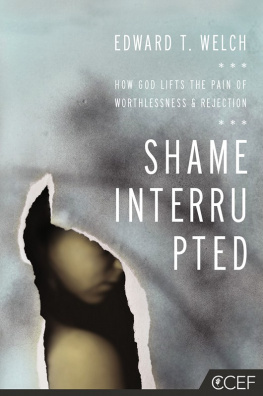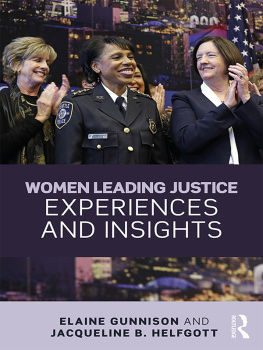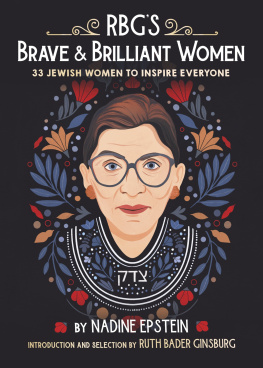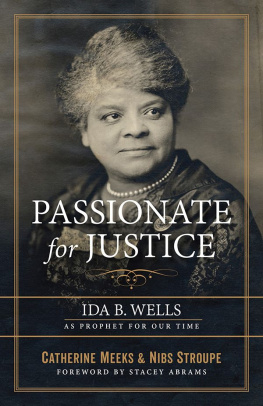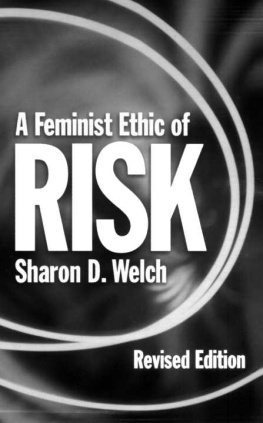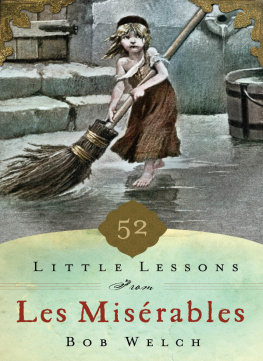The Role of Female Seminaries
on the Road to Social Justice for Women
Kristen Welch
and
Abraham Ruelas
Foreword by Susie C. Stanley
The Role of Female Seminaries on the Road to Social Justice for Women
Copyright 2015 Kristen Welch and Abraham Ruelas. All rights reserved. Except for brief quotations in critical publications or reviews, no part of this book may be reproduced in any manner without prior written permission from the publisher. Write: Permissions. Wipf and Stock Publishers, W. th Ave., Suite , Eugene, OR 97401 .
Wipf and Stock
An Imprint of Wipf and Stock Publishers
W. th Ave., Suite
Eugene, OR 97401
www.wipfandstock.com
ISBN : 978-1-62032-563-6
EISBN : 978-1-63087-750-7
Manufactured in the U.S.A. 11/03/2014
To our fellow Christians who work with each other in a spirit of unity to promote and to defend equality for women.
Be completely humble and gentle; be patient, bearing with one another in love. Make every effort to keep the unity of the Spirit through the bond of peace. There is one body and one Spiritjust as you were called to one hope when you were calledone Lord, one faith, one baptism; one God and Father of all, who is over all and through all and in all.
Ephesians :, NIV
Dr. Kristen Welch is an Instructor of English at Cochise College in Sierra Vista, Arizona. Her publications include Women with the Good News: The Rhetorical Heritage of Pentecostal Holiness Women Preachers (Centre for Pentecostal Theology Press, 2010 ) and Deep Roots: Defining the Sacred Through the Voices of Pentecostal Women Preachers (CreateSpace, 2014 ).
Abraham Ruelas is Dean of Academics and Professor of Communication and Psychology at Patten University and author of Women and the Landscape of American Higher Education: Wesleyan Holiness and Pentecostal Founders (Wipf and Stock, 2010 ) and No Room for Doubt: The Life and Ministry of Bebe Patten (Seymour Press, 2012 ).
Foreword
O ne afternoon a student excitedly rushed into my office to tell me she had uncovered information on women attending a seminary in the nineteenth century. She mistakenly equated the meaning of the term seminary in that earlier time with its current reference to a school offering graduate education to people preparing for ministry. I hated to undermine her potential discovery but felt an obligation to provide an appropriate definition. What she had actually discovered was a reference to a school offering secondary education to girls. Abraham Ruelas and Kristen Welch focus on this type of seminary. They examine the history of education in the United States to tease out information relating to female seminaries, their antecedents and the institutions that later traced their roots to them. They demonstrate the role of female education, particularly in seminaries which were popular in the nineteenth and early twentieth century. Their focus illustrates social justice for women as it relates specifically to the increasing acceptance of womens equality in a society as a result of access to additional education.
Welch and Ruelas pursue an inclusive approach to their subject. They do not start with an exploration of British roots as others have often mistakenly done. They correctly begin their investigation on the West Coast during the sixteenth century among Spanish settlements. Along with a comprehensive geographical perspective, they examine education provided for Native American and African American girls as well as Caucasians. They trace the expansion of education for girls from private tutors in the home to finishing schools, from academies to seminaries and additional steps along the way. A number of female seminaries ultimately changed into colleges restricted to women. Gradually, more colleges and universities traditionally open only to men began admitting women. This slow progression in academic opportunities has contributed toward the empowerment of women enabling them to assert their equality.
While the book primarily illumines the positive role of education in girls lives, the authors do not overlook evidence that illustrates a negative impact as well. For instance, the goal of education at the Spanish mission schools was conversion, not only to Christianity but to Spanish civilization. The degree of emphasis on cultural assimilation depended upon which religious orders sponsored the schools. The education of Native American girls more consistently illustrates an adverse effect since a primary goal was to promote assimilation by erasing the language and culture of the students. Education did not always contribute to positive results for girls. While the authors intention is to demonstrate the positive effects of education girls in terms of increased recognition of equality, they do not ignore the negative implications when they were present. Likewise, the involvement of Christianity in female education has not always led to beneficial results. Most Christians promoted assimilation in the mission schools and in schools for Native Americans which they sponsored. Today, this objective is placed on the negative side of the ledger. Ruelas and Welch acknowledge this history.
This text, however, provides a strong corrective to studies that overlook or deny the significant positive role of Christianity in both establishing and promoting girls education. To a large extent, education for girls in this country can be traced to Christian origins. They accurately identify Christianity as being responsible for advances in educational opportunities for girls. For instance, the Ursuline Sisters founded the first female academy in what became the United States in 1727 followed closely by the creation of a Moravian school in Pennsylvania. In the nineteenth century, Christian groups began establishing seminaries which particularly contributed toward fostering womens equality.
This work covers the big picture by examining changes in curriculum that demonstrate opportunities for females to receive additional education. During the eighteenth century, daughters of wealthy families studied primarily ornamental subjects which included topics such as dancing and drawing. Gradually, useful subjects joined ornamental subjects, expanding the curriculum to include classes that were more academically focused. Slowly, the balance shifted from ornamental to useful subjects. While the lines between the two were often blurred, over time the balance shifted from ornamental to useful subjects.
As seminaries replaced earlier forms of education for girls, curriculum offerings began to more closely resemble that of boys schools. The authors supplemented their overview with in depth pictures of curriculum provided by individual schools, sometimes retrieved from archival sources. For example, the text includes an examination of curriculum at well-known schools such as Mary Lyons Mt. Holyoke Female Seminary as well as lesser known schools such as Farmville Female Seminary.
Education opportunities improved dramatically when associated with cultural expectations for women. This was often unintentional as the explicit goal of these ideologies was to train women to better fulfill their place as mothers within the home. But education tended to subvert this agenda, ultimately propelling women toward further equality. The concept of Republican Motherhood offers an excellent example. Again, a quick definition is in order. The use of republican in this phrase is not to be confused with the current political party. The term was coined to describe the prescribed role of mothers in the early decades following the founding of the United States. The concern was to raise sons to foster the political ideals of the new republic. Mothers were encouraged to exert their political influence in the home rather than in the political arena. There was no place for women in the public arena of politics. Their involvement in nation-building was solely behind the scenes in the private realm of the home. Obviously, this social construct supported a highly restrictive role for women. However, it played a dramatic part in furthering womens education in order to prepare them for this important task. Unintentionally, it provided a stepping stone in that increased education ultimately led to womens involvement in all areas of public life.





